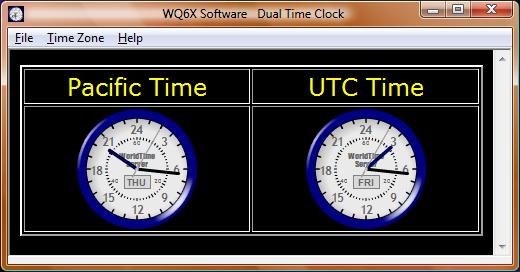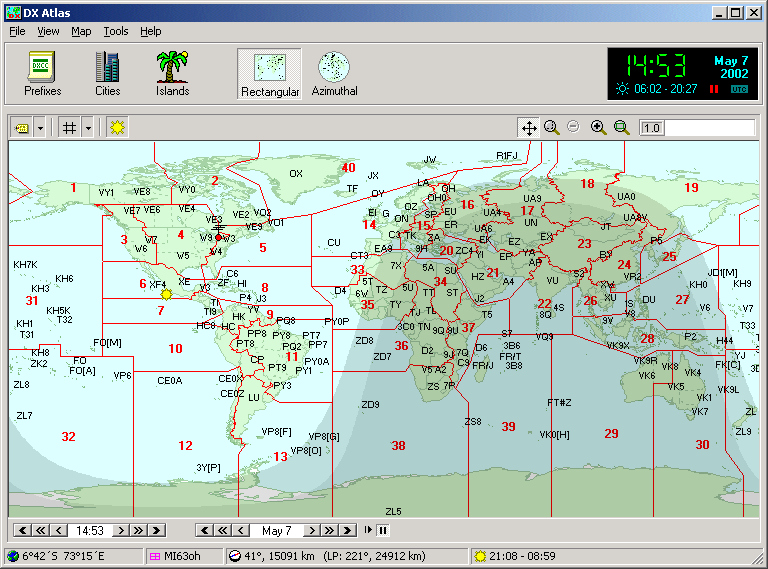

Leap seconds can be either positive or negative, but so far, only positive leap seconds have been needed. These corrections, called leap seconds, are coordinated under international agreement by the International Earth Rotation Service. Occasional corrections of exactly 1 s are inserted into the UTC time scale to keep the two time scales in agreement. If you need UT1 with an uncertainty of 1 s, you can simply use UTC, since the two time scales are always kept within 0.9 s of each other. UT1 is available at two levels of accuracy. You can obtain UT1 from the time signals broadcast by WWV and WWVH. UT1 is derived by astronomers who monitor the speed of the Earth's rotation. Applications such as celestial navigation, satellite observations of the Earth, and some types of surveying require time referenced to the rotational position of the Earth.

Surprisingly, some users need time that is related to the rotation of the Earth, which is less stable than UTC. UTC runs at an almost perfectly constant rate, since its rate is based on cesium atomic frequency standards. The UTC time scale broadcast by WWV and WWVH meets the needs of most users. The 440-Hz tone is omitted, however, during the first hour of each UTC day. In addition to being a musical standard, the 440-Hz tone provides an hourly marker for chart recorders and other automated devices.

The 440-Hz tone (the musical note A above middle C) is broadcast once each hour, during minute 2 on WWV, and minute 1 on WWVH. The schedule for the audio tones is listed in the table, with the minutes labeled from 0 to 59. However, a 440 Hz tone is broadcast once per hour, and some minutes do not include any audio tones at all. Most minutes feature a 500 or 600 Hz audio tone. Then, the standard frequency audio tones resume.īoth WWV and WWVH broadcast standard frequency audio tones that alternate during most minutes of the hour. As shown in the graphic below, the total zone around the second pulses lasts for 40 ms, consisting of 10 ms of silence, the 5 ms tone, and another 25 ms of silence.

The silence before and after the pulses makes it easier to identify the second pulses. The station's on-time marker is synchronized with the start of the 5 ms tone. The second marker for the broadcast is at the end of the 10 ms period and the start of the 5 ms period. The remaining seconds pulses are short audio bursts (5 ms pulses of 1000 Hz at WWV and 1200 Hz at WWVH) that sound like the ticking of a clock.Įach seconds pulse is preceded by 10 ms of silence and followed by 25 ms of silence. The first pulse of each minute is an 800 ms pulse of 1000 Hz at WWV and 1200 Hz at WWVH. The first pulse of each hour is an 800 ms pulse of 1500 Hz. These pulses are heard every second except on the 29th and 59th seconds of each minute. The most frequent sounds heard on WWV and WWVH are the seconds pulses. The hours are numbered beginning with 00 hours at midnight through 12 hours at noon to 23 hours and 59 minutes just before the next midnight. However, the difference between UTC and local time does change-by 1 hour. When local time changes from Daylight Saving to Standard Time, or vice versa, UTC does not change. The number of hours depends on the number of time zones between your location and the location of the zero meridian (which passes through Greenwich, England). UTC differs from your local time by a specific number of hours. Coordination with the international UTC time scale keeps NIST time signals in close agreement with signals from other time and frequency stations throughout the world. UTC was established by international agreement in 1972, and is governed by the International Bureau of Weights and Measures (BIPM) in Paris, France. The announced time is "Coordinated Universal Time" (UTC). The WWV announcement follows at about 7.5 s before the minute. The WWVH announcement occurs first, at about 15 s before the minute. Voice announcements are made from WWV once every minute.


 0 kommentar(er)
0 kommentar(er)
